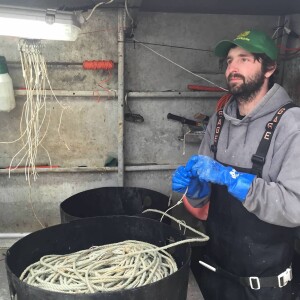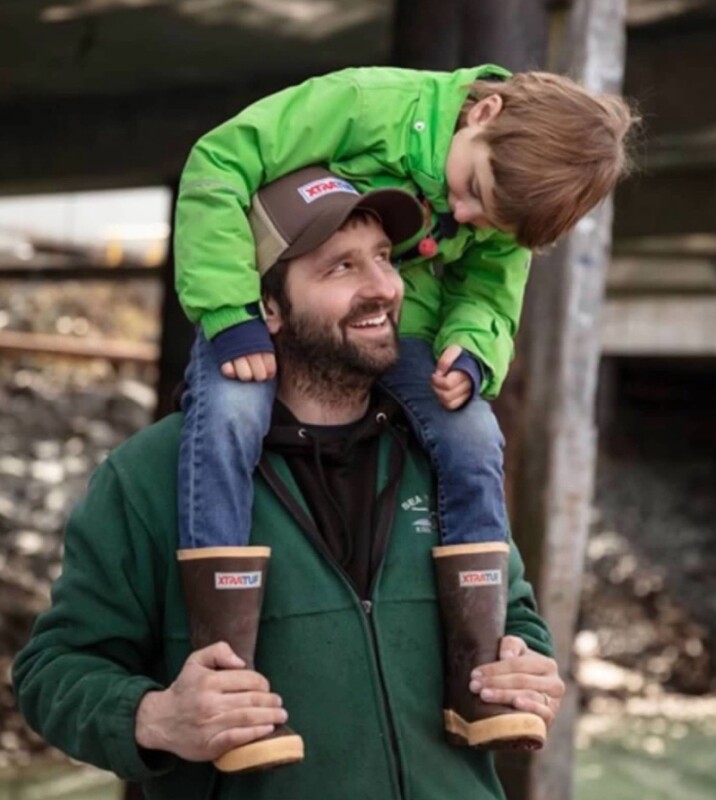Part Three of Erik’s story. To read the previous article, click here.
For more than a year, my wife and I researched shipping logistics, processing options in Alaska and the lower 48, vessel conversion options, and captain and crew interest in trying something new. Even with a proven example thriving in Iceland, was there enough interest within our own business to change our behavior?...
The tipping point
“Whatever you’re meant to do, do it now. The conditions are always impossible.”
— Doris Lessing
Coincidently, during this time, the Alaskan seafood industry collapsed around us. In the summer of 2023, we received a base price for sockeye salmon of $0.50 per pound, and cod fell from $0.45 in the A-season to $0.32 by the fall B-season. Longtime crew members departed for good in search of more steady employment. A dependence on large processors moving seafood as a global commodity creates an oscillating effect on prices, and increasingly, crewmembers with house payments and families couldn’t risk it. When the 2024 A-season arrived, Alaska cod prices dropped to $0.25 per pound, the lowest I’d seen since I was a teenager. Fuel was in the high $4 per gallon range, and bait was over $1 per pound.
I periodically contacted my new colleagues in Iceland to see if their prices were drastically fluctuating as well. Once again, the answers from Iceland floored me.
With the exception of minor shifts in the three-to-five cent range, common at certain times of year, Icelandic prices remained relatively steady. As prices dropped in Alaska by almost 50 percent, the disparity between the two countries became more obvious. Harvesters in Alaska were getting nearly 10 times less than their Icelandic counterparts.
My wife and I bit our fingernails, hoping for the boat to break even while the costs of goods and services skyrocketed. One hiccup midseason could put you in the red. Harvesters were left feeling vacant and vapid, working their tails off to barely break even in some of the toughest fisheries on the planet. Every fishery has initial financial hurdles before you start making money each season, but this downswing felt different.
Costs of goods and services were so high, and the price of fish so low, that no amount of fish could make up for the difference. We had to get more value out of our catch. Luckily, we’d been laying the groundwork to do just that. Risky or not, it was time to try something new.
By the time the 2024 A-season finished, it felt like our boat had run a marathon. Rather than catch up on routine maintenance, we jumped straight into halibut season. Even after four solid months of fishing and over 70 containers worth of cod, we needed the halibut cash flow to stay on the hamster wheel. When the Kaia pulled into the Homer dock, the halibut crew was waiting to board as soon as the cod crew left. Two days later, I left Homer for the halibut grounds.
Two days after halibut ended, the vessel went west to tender salmon. The hamster wheel was still going strong, but we were getting nowhere. What little money was left after one season went into starting the next.
Meanwhile, friends and family who had fished their entire lives traded rain slickers for work boots on tugs, boats, or construction sites. Extreme price fluctuations, increasing costs of equipment and maintenance, trouble finding qualified crew, declining iconic stocks like crab and halibut, and lost hope in fisheries management culminated into a perfect storm. We all started to question our sanity daily. My wife and I had always considered it critical to be well diversified in our fishing portfolios, but here we were with three boats trying to execute six very different fisheries. And we were still just treading water. I took on an apprenticeship in a completely different field for fear that our industry may never recover. A change wasn’t just looking appealing, it seemed critical if we wanted to stay in business.
To read more of Erik’s story, follow the next article of Redefining Alaska’s Seafood Legacy.







